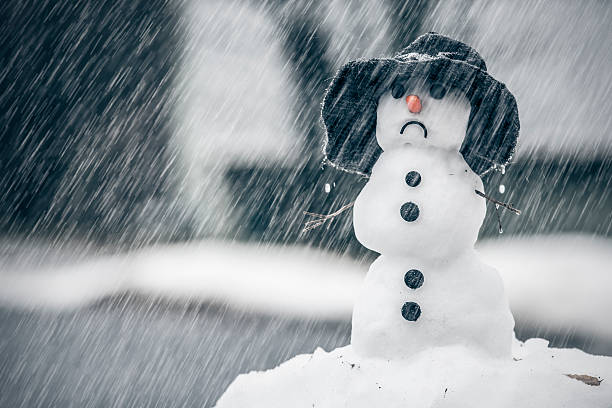Winter is hard. For many of us, it’s a season of cold, gloomy days with little sunshine. We spend less time outdoors and more time under artificial lights. For 5% of the U.S. population, these seasonal changes can signal the start of seasonal affective disorder, more commonly known and appropriately abbreviated as SAD. SAD is a potentially serious mental health condition that is much more than just winter blues.
It’s normal to feel sad about summer for a lovely autumn ending. Cold or snowy weather makes it more difficult to be active outside, and often it can be dark by the time you get home in the evening. People start to feel cooped up. However, there are differences between feeling blue about winter and SAD. Individuals with winter blues my experience more fatigue, feeling less motivated to go our or socialize, or may just not feel as happy as they do during the warmer months. However, these individuals are still able to go about their day unimpaired.
SAD affects day-to-day life for those who struggle with it. Individual with SAD may feel depressed most days, withdraw from family and friends, be unable to complete normal work, feel hopeless, or even in extreme cases, feel suicidal.
Many individuals with SAD will experience symptoms similar to those with depression, but may only experience these symptoms for 30-40% of the year. SAD is cyclical in nature, often easing with the beginning of Spring. The shift is thought to be connected to our circadian rhythm, or internal clock. As the days get shorter during winter, our circadian rhythm is disrupted, which can contribute to SAD.
Lack of sunlight, which helps our bodies with Vitamin D, can also disrupt our mood, We may have less serotonin, which can make it more challenging to regulate our mood, and an excess of melatonin, which can make us more lethargic.
There are many approaches to treating SAD, varying from person to person. Treatment plans may include therapy or medication. Therapy can be tremendously useful for those with SAD where individuals can learn coping skills, learn to challenge thoughts, or just have someone to talk to.
Light therapy is another common treatment for SAD. Bright, artificial lights are used to help people compensate for the loss of daylight and can help to improve mood. However, at this time, light therapy is not yet FDA-approved or well researched.
Because SAD can be predictable, it’s beneficial for those who struggle with it to get on top of it before it can become difficult to manage. Many will only take medications or use light therapy during the time of year that they need it. Simple behavioral or lifestyle changes can also help those with SAD, such as taking an art class or signing up for an indoor sports club. Regular exercise can be extremely beneficial to overall mental well-being. Physical activity releases endorphins, which improve our mood and can help us sleep better.
If you struggle with SAD, or even just the winter blues, work with a mental health professional to find a treatment and self-care routine that will work for you. Here’s to an early Spring!
*** If you’re struggling with suicidal thoughts, don’t hesitate to call a hotline. The National Suicide Prevention Lifeline is available for free 24/7 at 1-800-273-8255. ***



